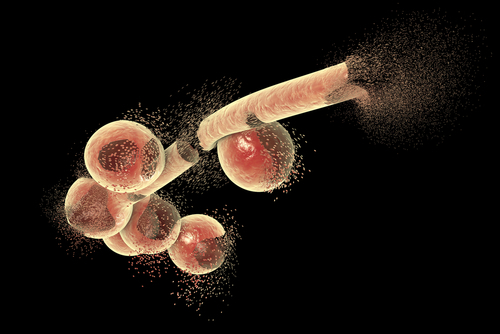What's in store for antifungal therapy- new agents and recent advancements
M3 India Newsdesk Apr 09, 2018
Fungal infections have grown manifold in the last couple of years, with more people battling other diseases being at high risk, and while the management of infections has become more challenging, it has also paved the way for new advancements.

The prevalence of fungal infections causing fatal consequences has increased over the past few years. Over 300 million people are affected with serious fungal infections worldwide, out of which 25 million are at risk of dying. The population at risk for these lethal infections include patients with AIDS, transplant recipients, patients with haematological malignancies, and immuno-compromised individuals. Management of invasive fungal infections has become more challenging now as the emerging fungal pathogens develop resistance against many antifungals.
This article will provide an insight into the studies that have contributed to antifungal therapy in the recent times.
Dermaseptin-S1 decreases C.albicans growth
This research was performed to investigate the effect of synthetic antimicrobial peptide dermaseptin-S1 (DS1) on the growth of C. albicans. C.albicans cells treated with DS1 displayed a distorted cell wall surface in the electron microscopic analysis, DS1 showed similar effects as that of amphotericin B (AMB). The effect of DS1 on C.albicans growth, transition, and biofilm formation may occur through gene modulation, as the genes involved in C.albicans pathogenesis were all down-regulated when C.albicans was treated with DS1.
The Malaria Box contains antifungal Drugs
The Malaria Box, promoted by Medicines for Malaria Ventures, Geneva is an ensemble of 400 compounds with antimalarial activity, available for further research on its role in treating malaria. Recent research has identified antifungal activity in many of these compounds.
A drug in the Malaria box exhibited 16- to 32-fold higher efficiency than the standard fluconazole against Cryptococcus neoformans. Some activity was also seen against fungi like Lomentospora prolificans, Cryptococcus gattii, and a common fungi Candida albicans. According to the authors, this study can lead to the discovery of a new class of drugs that have antifungal activity.
Triple Therapy or Amphotericin B plus flucytosine?
Triple therapy is a finer substitute than the widely used amphotericin B plus flucytosine, for patients with non-HIV-infected and non-transplant associated cryptococcal meningitis.
A recent study found that subjects treated with amphotericin B, 5-flucytosine, and fluconazole had better clinical outcomes. In patients treated with this drug combination, the percentage of fungi Cryptococci per ml of CSF reduced from 80% to 50%; they needed less time for CSF sterilization and showed improved neurological functions.
Ultra-short peptides show antifungal activity
An octapeptide was identified with efficient activity against C. albicans in an antimicrobial peptide library. A common genital fungal infection in women, called Vulvovaginal candidiasis(VVC), is caused by the yeast Candida albicans. This yeast has developed resistance to fluconazole. Some peptides can form drugs that have antifungal activity. These act by aiming the fungal membranes and rapidly destroying them; they reduce the chances of resistance development. The octapeptide could be a potential therapy for VVC.
ß-D-glucan, a new marker for invasive candidiasis
A noteworthy correlation between the level of ß-D-glucan (BDG) at diagnosis and the outcome of candidemia has emerged. A study found that during the diagnosis, 43.5% cases of candidemia and 73% cases of chronic disseminated candidiasis (CDC) showed a positive BDG assay.
For the follow-up, 2 to 6 months before the recovery of CT-scan lesions BDG negative results were obtained. BDG can be a potential candidate as marker to assess the efficacy of treatment for candidemia and CDC.
Mushrooms are the new biofungicides
Biofungicides are compounds produced by living organisms that control the activity of plant pathogens like fungi or bacteria. These days, the commonly used methods to fight against the microfungi are synthetic, that may have a negative impact on the host and the surroundings and can lead to the development of resistance in the pathogens.
Many mushrooms produce intracellular and extracellular metabolites that can have antifungal properties. These metabolites include polysaccharides, peptides and phenolic compounds; they can act as immune-stimulators, inhibitors of pathogen development and activators of pathogen’s autolytic system.
Most of these agents show great promise. However, it is important to note that they are still in the initial phase of research. Only further studies and robust trials can confirm their clinical efficacy as antifungal agents.
-
Exclusive Write-ups & Webinars by KOLs
-
Daily Quiz by specialty
-
Paid Market Research Surveys
-
Case discussions, News & Journals' summaries